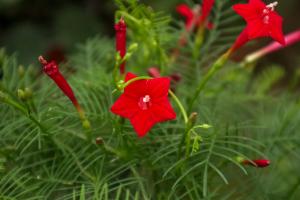Step 1

Pick a big watermelon and eat the watermelon pulp, leaving only the watermelon skin
Step 2

Use a spoon to scrape off the red pulp in the watermelon skin, because the sugar content in the pulp is too high. Putting it together with the watermelon skin for composting is easy to attract small flying insects and ants
Step 3

Use the kitchen knife to cut the watermelon peel vertically into thin strips. When cutting, pay attention not to let the knife cut your hand
Step 4

Cut the watermelon skin horizontally with a kitchen knife and cut it into small dices one by one
Step 5

Put the watermelon peel into the plastic bottle, don't fill it too full, and leave space for one finger
Step 6

After the watermelon skin is packed, there is no need to add water to the plastic bottle, and then close the cover. The cover should not be too tight and leave some seams to avoid flatulence
Step 7

Put the plastic bottle containing watermelon peel on the sunny place on the balcony. The more the sun shines, the easier it is to rot and the faster it ripens
Step 8

Open the lid of the plastic bottle every day to breathe. Watermelon peel composting generally has no taste. If you are worried about taste, you can put in some orange peel
Step 9

In summer, water will come out after retting watermelon peel for 10 days and a half months. This water can be poured out and directly used to water and fertilize the flowers. The rest of the watermelon peel can be put in the bottle to continue drying until the watermelon peel no longer flows out. The remaining watermelon peel residue can be buried at the bottom of the pot as the base fertilizer for flowers
Step 10

If you are a novice and are worried that the retted watermelon peel water will burn the roots, you can dilute it according to the ratio of watermelon peel water: clear water = 1:10, and then water the flowers after dilution
Step 11

Fertilize the flowers with watermelon peel, the effect is very good! Azalea, jasmine, gardenia and Begonia are suitable for all kinds of flowers, and the fertilizer effect is mild without damaging the root

 how many times do yo...
how many times do yo... how many planted tre...
how many planted tre... how many pine trees ...
how many pine trees ... how many pecan trees...
how many pecan trees... how many plants comp...
how many plants comp... how many plants can ...
how many plants can ... how many plants and ...
how many plants and ... how many pepper plan...
how many pepper plan...






























